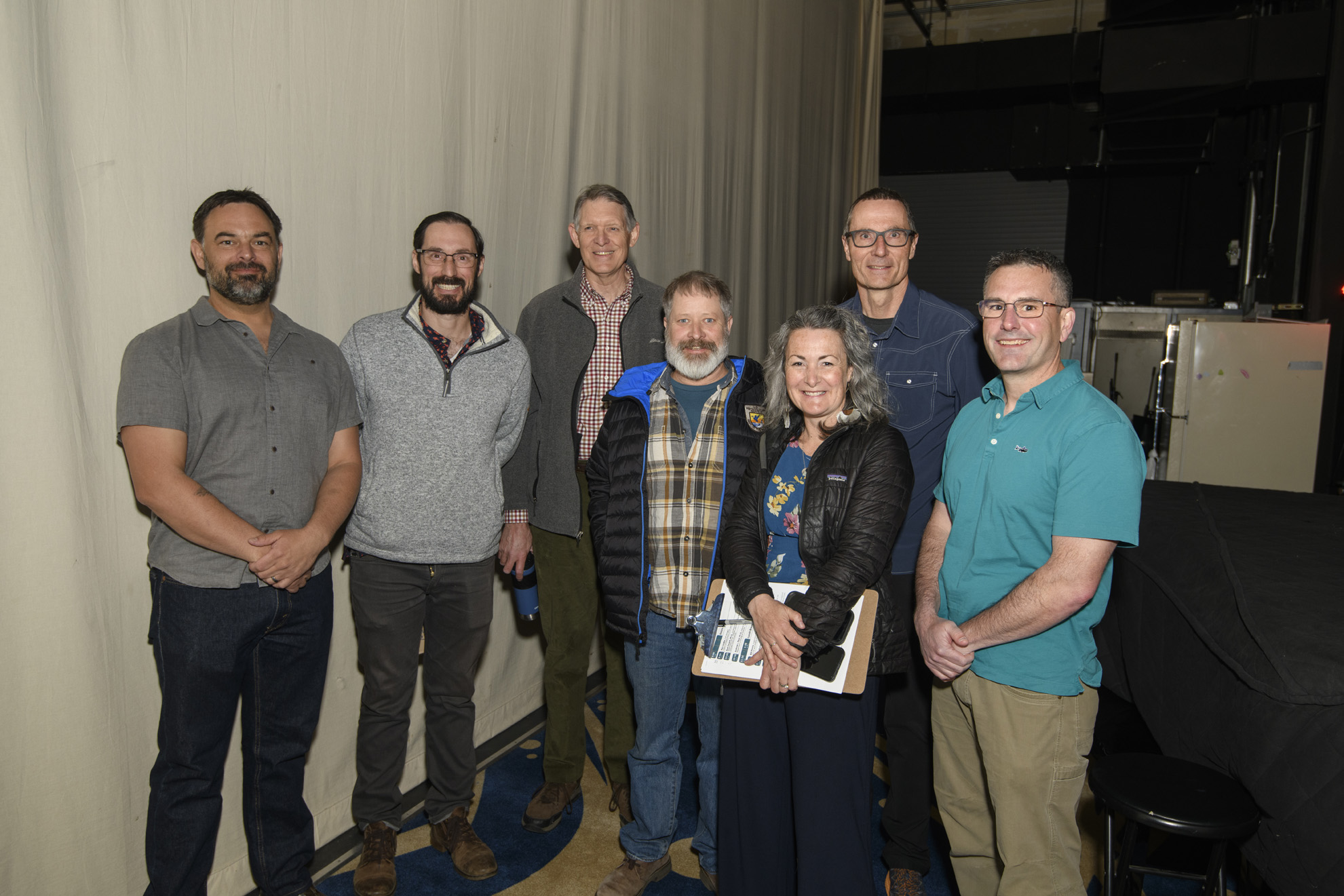
The first day of the 2024 Trinity River Restoration Program Science Symposium was a great start to the week. Science Advisory Board members Kurt Fausch, Ph.D. and Andrew Paul, Ph.D. (link to bios) started the day by sharing their sage wisdom from decades of scientific practice and learning.
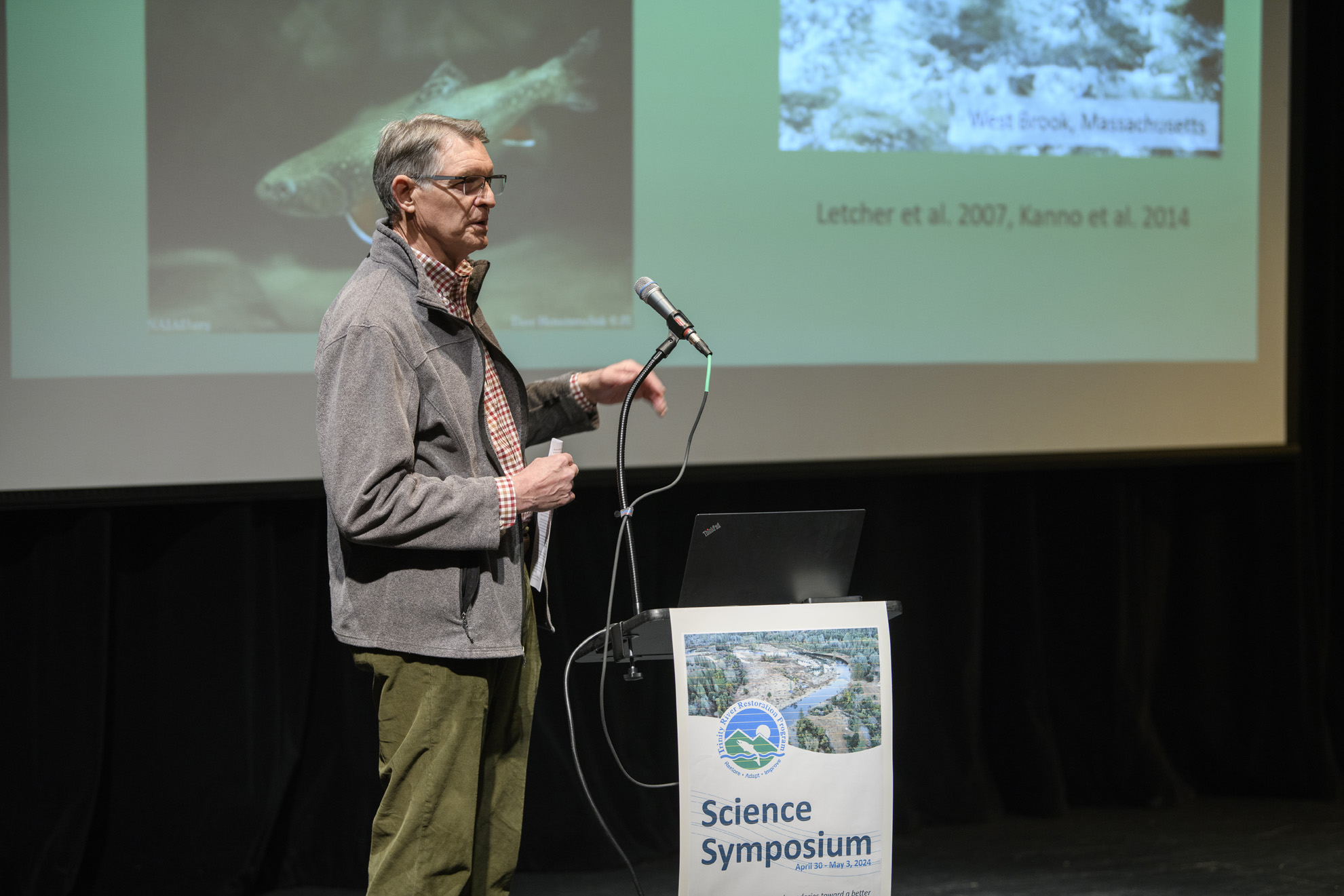
Dr. Fausch took us across the Pacific Ocean to share his experiences with early groundbreaking work on the interconnectedness of streams and riparian ecosystems with colleagues in Hokkaido Japan, reminding us that the human connection to rivers and fish is, perhaps, more important than any scientific finding we can achieve.
Next, Dr. Paul rounded out the morning with a lesson on study design and a cautionary tale on how good intentions can sometimes lead us astray, while sound, well formulated sampling designs can buffer against unintended missteps.
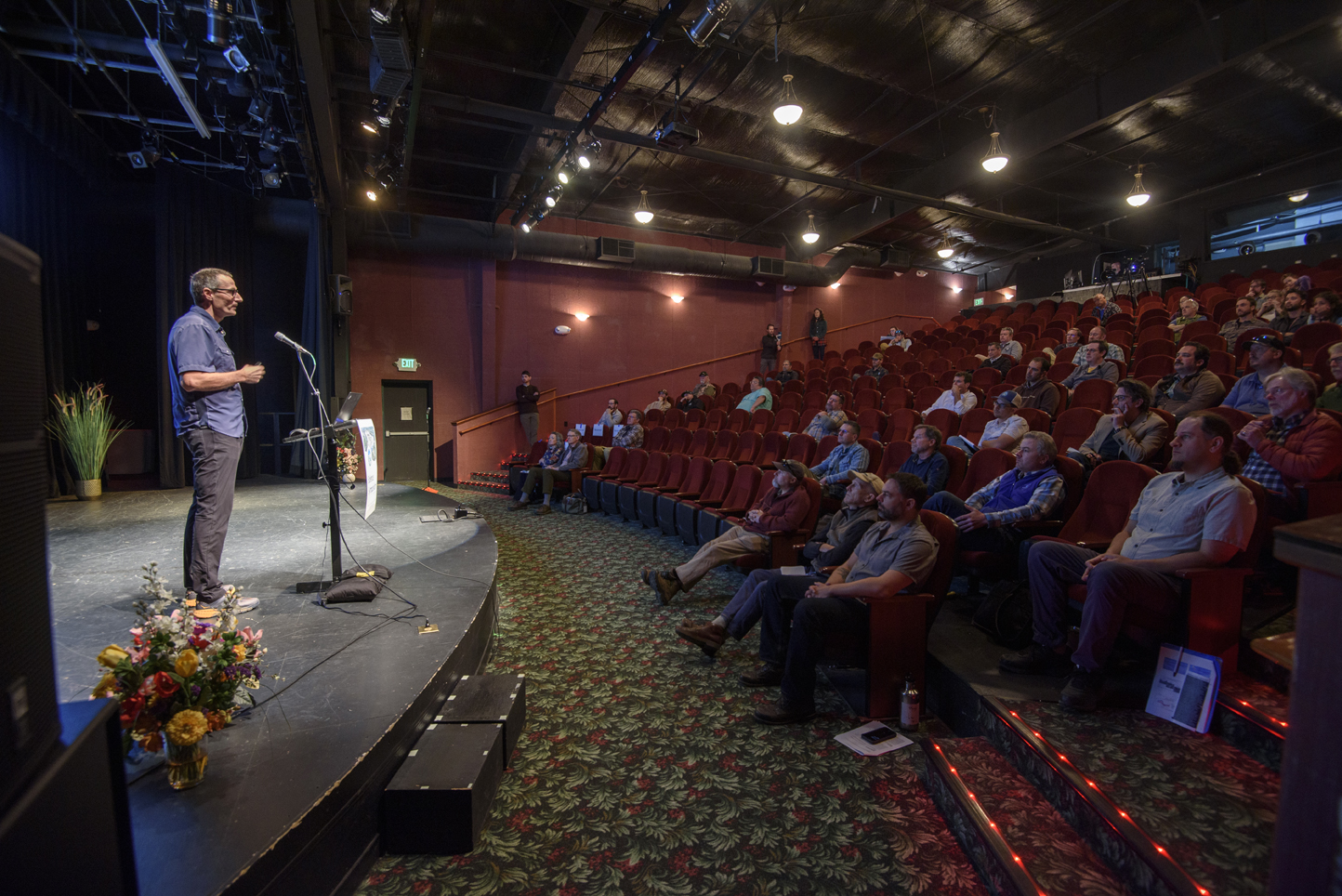
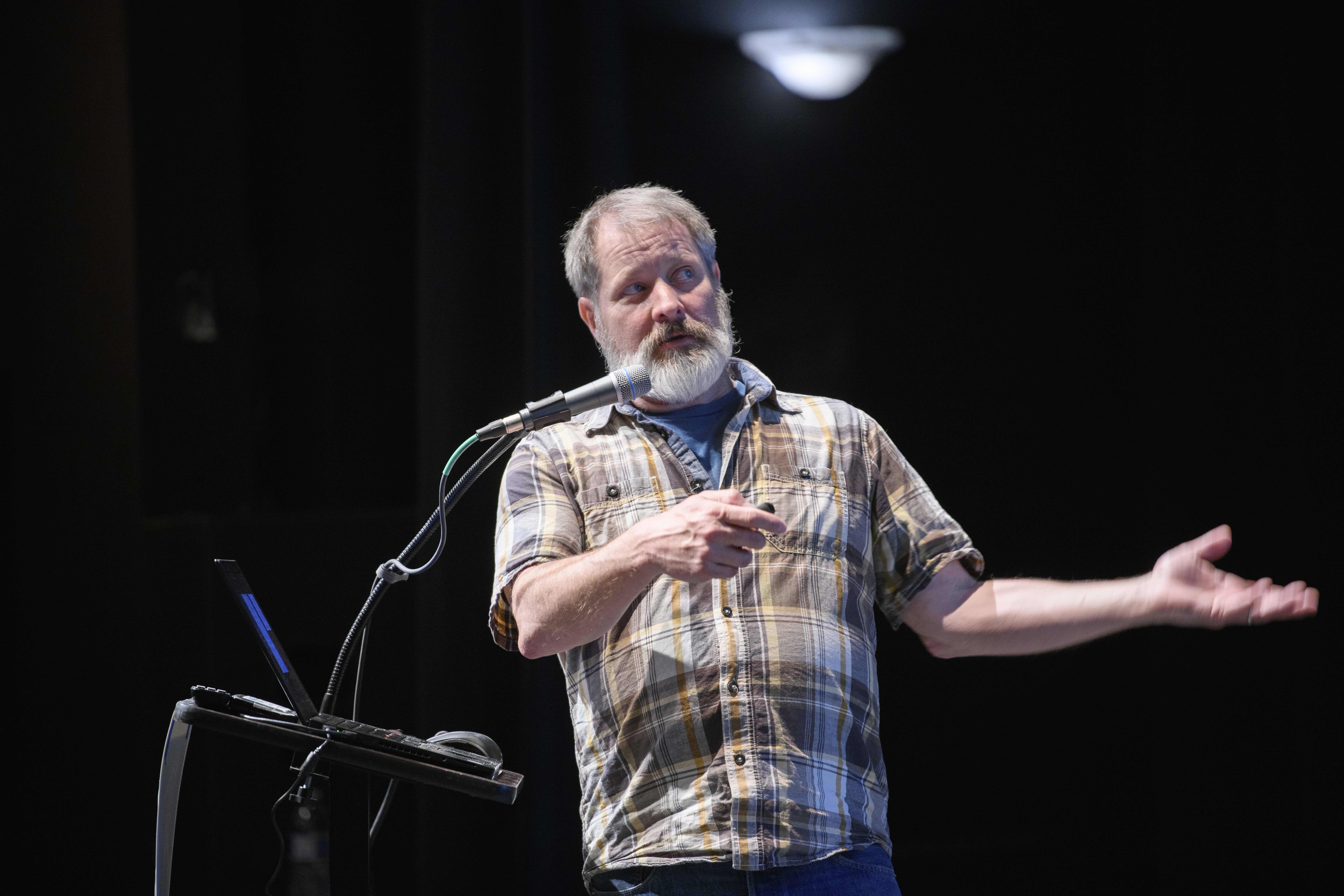
After lunch we welcomed Bill Pinnix from US Fish and Wildlife Service. Pinnix brought the audience back to the Trinity River by showing one of the notable successes of the Restoration Program, a significant increase in juvenile Chinook Salmon production since implementation of the Record of Decision in 2000. Pinnix noted that, in spite of successes with juvenile outmigrants, results for adult Chinook Salmon returns have been mixed.
The rest of the afternoon was dedicated to a short list of the challenges that juvenile salmonids face in their journey to the ocean and back. Chad Martel of the Hoopa Valley Tribal Fisheries Program described a multiagency, multiyear study of juvenile outmigration survival from Lewiston Dam to the Klamath River Estuary, where survival has so far shown to be higher than most area biologists expected.
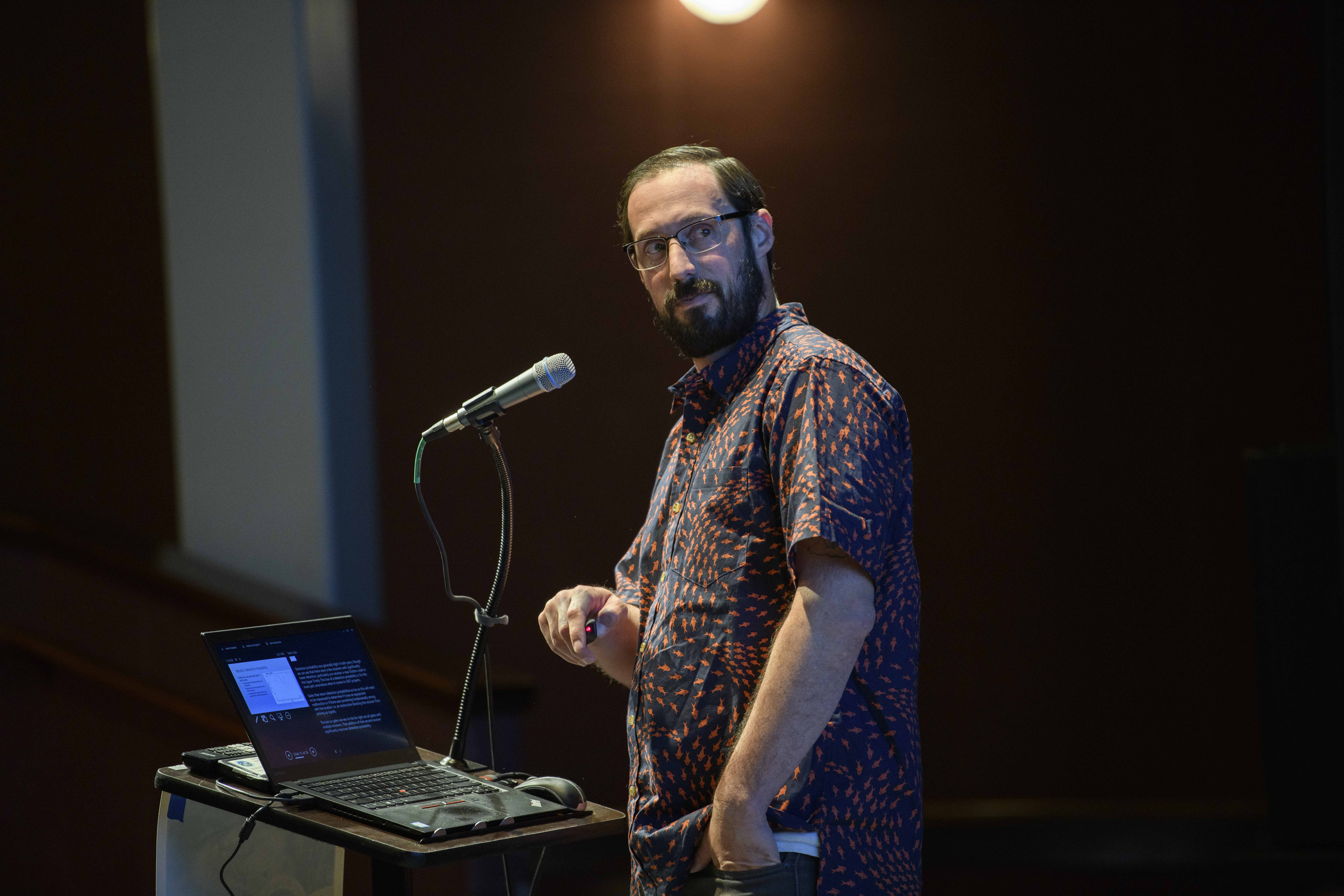
Dr. Nicholas Som from US Geological Survey and Cal-Poly Humboldt taught us about the fish parasite Ceratanova shasta, the history of learning in the Klamath basin, and successes in translating scientific discovery into water management implementation.
Finally, renowned ocean fish ecologist Nate Mantua, Ph.D. from the National Oceanic and Atmospheric Administration provided a glimpse of insight into the complex world of Pacific Ocean circulation patterns, tropical teleconnections, coastal upwelling, food web dynamics and the perils and opportunities that face young salmon as they survive, die, grow and mature to return to the Klamath river and complete their lifecycle.
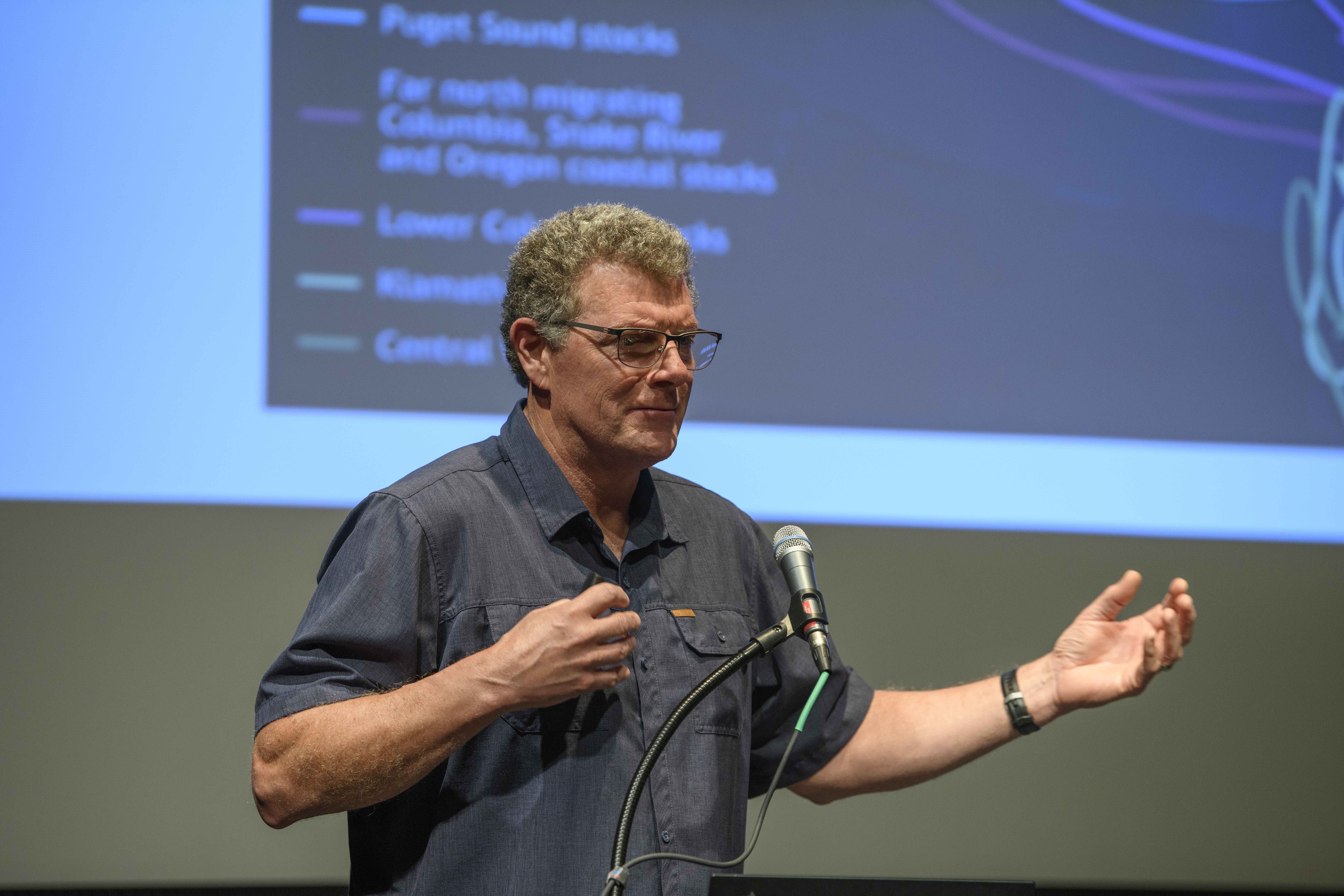
The evening was rounded out with a panel discussion held at the Lewiston Hotel, Restaurant and Dance Hall which was moderated by Science Advisory Board member John Hayes from the Cawthron Institute in New Zealand. The 90-minute discussion provided insightful questions and educational dialogue between attendees and panelists and we thank everyone who was able to participate.

Presentation videos are being edited to include presenter slides – we will be uploading them to the 2024 Science Symposium page as they become available. For a list of power point presentations, please click here.
